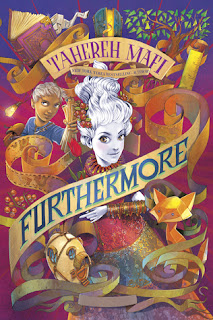The Marrow of Tradition Review
The Marrow of Tradition by Charles W Chesnutt (400 pages)
My Rating: 4 Stars
Date Finished: 25 April 2015
Synopsis:
Charles W. Chesnutt (1858-1932) was an author, essayist and political activist whose works addressed the complex issues of racial and social identity at the turn of the century. Chesnutt's early works explored political issues somewhat indirectly, with the intention of changing the attitudes of Caucasians slowly and carefully. However, The Marrow of Tradition marked a turning point in Chesnutt's career, with its direct and overt treatment of racism and political injustices in the South. The story of the white Carterets and the mixed-race Millers, whose lives are intertwined because the wives are half sisters, delves into a wide range of social and race issues. The novel's depiction of lynchings that occurred during the Wilmington Race Riot proved to be too controversial for readers of the time; however, Chesnutt considered it his best, and modern critics have recognized the novel as a milestone in the Civil Rights movement.
This teaching edition of the novel features an extensive selection of materials that place the work in its historical context. Organized thematically, these materials explore caste, gender, and race after Reconstruction; postbellum laws and lynching; the 1898 Wilmington riot upon which the narrative is based; and the fin de siecle culture of segregation. The thematic sections are rich with documents such as letters, photographs, editorials, speeches, legal decisions, journalism, and essays from leading periodicals of the era. The writers represented include such well-known figures as W. E. B. DuBois, Booker T. Washington, and Charlotte Perkins Gilman, as well as fascinating, half-forgotten characters like the black newspaper editor Alexander Manly and the white supremacist Thomas Dixon. The editors' introductions and selection headnotes provide additional background for understanding the mythology of race and Chesnutt's penetrating examination of its mechanisms and consequences.
My Review:
This book was an interesting read and another book I had to read for one of my classes. It was full of historical events that were easily pointed out. The Plessy versus Ferguson case, the Wilmington Massacre, and the obvious ties to the racial tensions in the newspapers of the South at the time. It was interesting to get the viewpoints of so many different characters in this novel. It gave a lot of insight into the minds of the people at the time this was written and throughout the period after the Civil War. There are a few points that are slow, but that is to be expected of any book published so long ago. There are some heavy dialect aspects to the book that, at first, can be more difficult to read, but as you go along, you get used to it and it will go by much faster. I recommend this book to anyone who wants to know more about what went on around the late 1800s and early 1900s in the South.




Comments
Post a Comment